My name is Mike Keesling, and I have what I think is an interesting perspective on image creation and I wanted to share it with you.
I grew up in a creative environment. My parents were both artists. Our house was the San Fernando Valley hub of the counterculture in the ’60s and ’70s. My father did light shows for Tina Turner, The Who, Pink Floyd to name a few. Busses full of hippies, painted on the outside, collaged in the inside would stop off at irregular intervals, unload tanks of nitrous oxide, pile into the pool, do their laundry, load up their tanks again, then depart for points unknown.
These were interesting times. The “man” was stifling your creativity, holding you back, keeping you down. And thus, I pretty much had free reign to live my life as I chose. What I call “overly permissive parents.” When I was four, my father taught me how to use all of his tools. If I could hold it, I could use it. Electric drill, soldering iron, screwdrivers, jigsaw, you name it. Other kids had Lego; Lego held me back.
My father had a model train store to pay the bills. I hung out there a lot. At the time, Industrial Light and Magic was not too far away, and the same was true of every special effects place and model shop in the motion picture industry. I was mentored by special effects designers, model builders, and Imagineers. I learned better ways to build things. I learned electronics and animatronics.
And I read. We had an encyclopedia set, Time Life books, and I had a bicycle and a library card. When I hit kindergarten, I was reading at the 4th-grade level, when I left elementary school I read at the college level. I read on every subject that let me advance my craft. Electronics and some chemistry mostly.
My first renaissance was when I was eight. My Aunt gave me an old Brownie camera. I shot and processed my own film in my closet. I made a terrible enlarger out of a light bulb, foil, and pinhole. I made ugly prints for a time, but I got distracted by a book, Lenz’s bomb and explosives disposal guide. I will leave it at that…
My second renaissance came when I was 13. I had learned the power of money and took what amounted to a full-time job at a place after school that was building a remote motion picture camera crane. I did mechanical design, machining, and some electronics. I got to put ideas into practice with real materials and tools.
I bought computers, synthesizers, printers, and plotters. Stuff to help me create and keep my mind happy. Common stuff by today’s standards, but in the early 80’s it was pretty esoteric and definitely fun. I got fascinated by 3D. I programmed 3D algorithms and output with my plotter using anaglyphic inks and glasses. I bought a laser and got into holography; I used the same laser to do light shows.
All this stuff was too much fun. My school work suffered. Where I cared, I excelled, but I got myself kicked out of junior high. High school was a serious challenge. I realized I was faltering so I checked myself out of my big high school and into a continuation. While there, I found my inner rebel. The board wanted to paint over a series of student murals, so I led a student strike. I presented our case to the board of education and preserved the murals. I was on local and national TV. I appeared on shows talking about kids, education, and dropping out.
I graduated high school, worked some odd jobs, met the woman of my dreams, and landed a job at a motion picture rental company called Clairmont Camera. Clairmont really represents the third renaissance for me in that it was the first place I got to apply myself fully.
Well, not at first.
I started there repairing and modifying motion picture lenses. Very technical, very detail-oriented. I learned about the exquisite precision required to build and maintain cameras and lenses and learned about how the soul of an image is captured through the lens.
I also learned at my first review that I “had too much imagination which, if left unchecked, could be a serious liability to the company.”
After two years of repairing lenses, I was transferred to the design department. I worked on a lot of different optical devices. Pinhole lenses, single element lenses, moving distortion filters, beam splitter rigs, motorize color wheels, and more.
One special day was really cool though. My boss, Denny Clairmont, was working with a customer on a rig that needed to reproduce the effect of explosions. The literal state of the art at the time was a motion base with eccentric weights on a motor that would shake the camera and lens. Denny wanted nicer electronics for the motor.
Instead, I asked why they weren’t doing it optically. I described the idea of a two-axis, variable angle wedge prism, and build a prototype with two optical flats, a trash bag, and some silicone glue the next day.
Long story short, The Image Shaker was born.
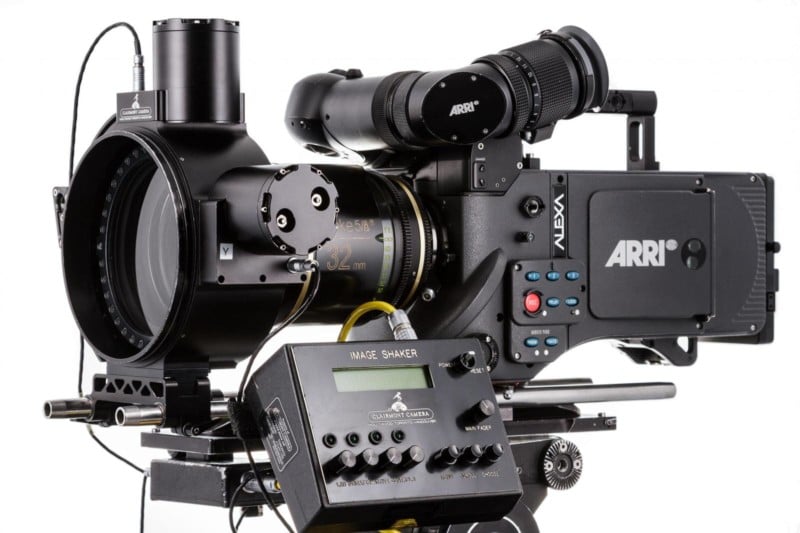
I designed the mechanics, electronics, fluids, and optics, and 6 months later we had a fleet of them. It was lighter than the shaking motion base, quiet, safe, and controllable with a variety of different modes. More importantly, it was a success. It was used on Saving Private Ryan, First Man, Star Trek Discovery, and hundreds of productions over the course of its ongoing life. If you have seen an action movie in the last 25 years, you have likely seen a shot that used it.

Another one of my successes was the Squishy Lens. The squishy lens was a thought exercise on the way home from work one day. The idea was “what if you had a flexible lens.” I ran the idea past Denny and he liked it. I bought some clear rubber and made some very primitive prototypes and showed him.
The Squishy Lens is actually a very complicated piece of equipment that tasked me on many fronts. Conceptually it is a hemispherical silicone lens compressed between two plates of polycarbonate. When uncompressed it acts as a powerful diopter. When compressed it acts like a window. The cool bit is when it is half compressed it acts like both. A window in the center of the image with a clear aspect and a diopter on the edges creating magnification and focus changes.
Three powerful motors actuated the front plate, allowing it to tilt and change the compression. A metal framework with holders for flags to block stray light, a bellows and air filtering to allow the thing to actuate and stay clean, finger guards to keep digits out of moving bits and an electronics and software to drive it all.
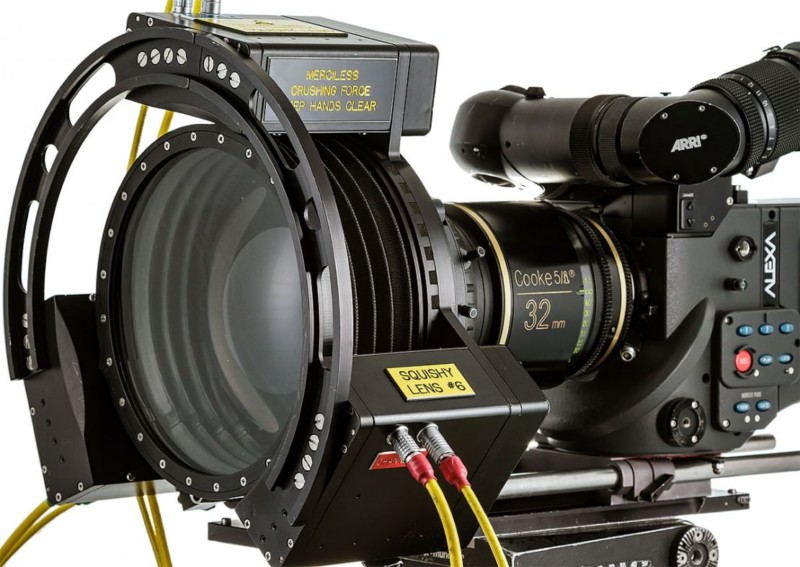
Though not as ubiquitous as the image shaker, it has been used extensively in movies like Minority Report, X-Men, and most recently you saw it in use on Picard.
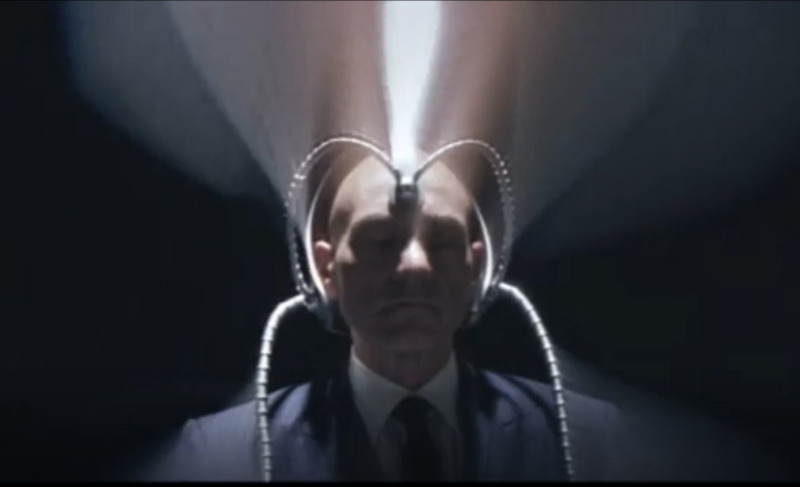
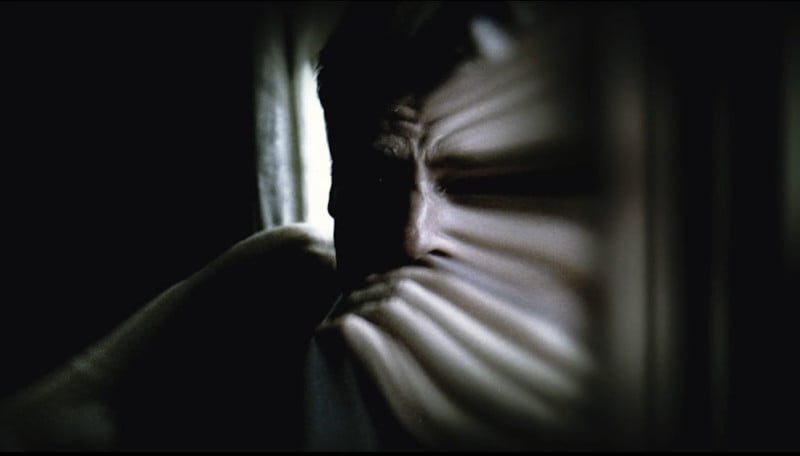
I am honored to have been awarded an Academy Award for the Image Shaker, an Academy Award nomination for the Squishy Lens, and an Emmy for my work in the field that included both of these inventions. A fun side note is my sister, Brooke, also has an Academy Award and Emmy.
When I left Clairmont Camera, the parting words to me were “we will really miss your imagination.” I am so thankful for them believing in me.
My fourth renaissance… That’s a lot of renaissances… When I left Clairmont Camera, it was to take a position at Panavision, another, larger, motion picture rental company. At Panavision, I didn’t do nearly as much cool stuff, but I did get to do a lot of important stuff. I developed a lot of metrology devices, I worked on some Academy Award-winning products and even did some work that affected the cosmetics of some of their product line.
I am most proud of a motion control system I designed that compensated for the motions of remote head camera cranes. It was unique in that it was real-time and dynamic. The cameraman could dial in the amount of contribution the motion control hardware made from no input at all to 100% assist. It did so during the shot, without any alarming behaviors.
I also learned how to work with teams of different engineers and bind them together. I learned about precision and aesthetics.
At this point, I closed a chapter of my life. I had spent 15 years at Clairmont Camera and Panavision combined. I worked with countless image creators and built tools to help them achieve their vision. I learned that science and engineering should support art but should never preclude it in an artistic field. Numbers are fine, but does it look pretty? Does it tell the story?
And for all this, I hadn’t really gotten back into creating my own images. I had been working really hard and raising a family.
I left Panavision to go work at a company called Applied Minds. Applied Minds is a sort of mash-up of engineering firm/architecture firm/production company and think tank.
Applied Minds represents my fifth renaissance. I started as an embedded systems engineer but leave as the director of electro-optics. I learned how to do things fast. Really fast. I have worked on a lot of things I can’t talk about and a few things I can. The coolest is a color night vision system I invented, but I also know about gigapixel imaging systems and imaging from ultraviolet through thermal.
During my 15 years at Applied Minds, I got to finally afford cameras and the time to play. I did a lot of project photography. I also bought a lot of cameras and took them apart just to play with them. I have played with cameras and point n shoots from all the significant brands. I have my favorites (Fuji) and my least favorites (Lytro).
While doing project photography I wore out the shutter on a Nikon D40 and put a lot of mileage on a Nikon D800 and Sony a7S II. I stopped counting at 250,000 shots. I looked at all my metadata and found that I shoot at one end of the zoom or the other 98% of the time. I stopped buying zooms for the most part.
But most importantly, I learned that the best camera is the one you have.
From an image creation standpoint, I still didn’t love my photography though. I was finally comfortable enough with it to look at other people’s work, however. Until then, I didn’t want to be tainted. I wanted my style to be mine and only mine, even if I found others’ works that I liked, I knew that my look was mine.
This image was the turning point for me photographically:
It captures a lot of my essence in it. Dark, gritty. It reminds me of my film days with ACROS 100.
The turning point for me photographically was going to school. I took a lab class at the local community college. Then beginning photography and intermediate photography, then a Photoshop class as well. I learned a lot about how different people approached image creation through their own personal geneses.
I watched people with film cameras adjust the ISO rating to make their exposure meter read a scene correctly (nearly always fatal) and saw people that didn’t know if they liked photography absolutely bloom. My beginning photo professor, Beck Brister, was fun and awesome. She fostered the creative spark in everyone.
Most importantly, we critiqued. Our intermediate class, run by Professor William Short, had an intense intimacy. The imagery and documentation of the student’s lives were so deep, thoughtful, and thought-provoking. I felt humbled every day I was with them.
Critique. When someone takes time out of their day to look at your image and give their insight, it is a precious gift. Be humble, gracious, and thankful.
So how does this all come together? You have seen my Trash Cam and Gull Cam on Petapixel.
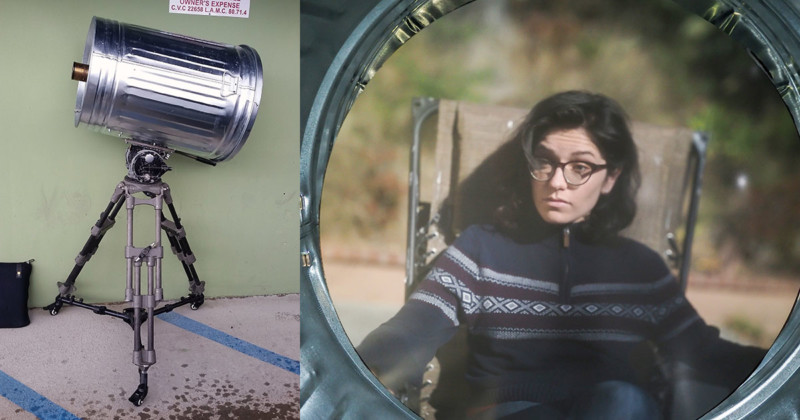
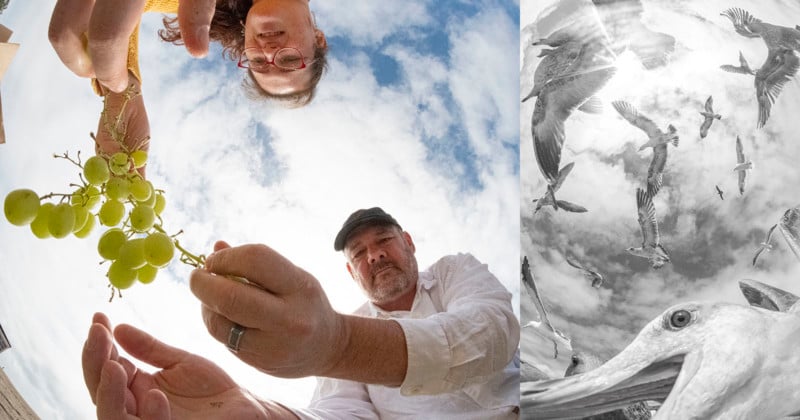
These were image ideas that needed hardware to realize, so I made it. I have been called technical because if I want something specific, I know how to get it or make it. I reject the idea that I am technical, however. If I am technical, then setting your camera on “M” is technical. I am fortunate enough to know enough about the things I want to do to realize it through skills I possess. That is all.
I have realized that I am a pictorialist. I am not necessarily a visual storyteller. One of my current projects is recreating the look of autochrome digitally. I wrote software to simulate the clumping of colored grains of potato starch, then evolved that software to do the heavy lifting that I used to use Photoshop for.
I have also built a few lenses to help me create my pictorialist dreams.
Sometimes I just want to have fun.
At the time of this writing, my employment is uncertain. I am looking at another potential genesis moment. I have opportunities presenting themselves that may lead me towards helping with the current pandemic, helping to better serve underrepresented demographics in the employment market. I’m not terribly sure to tell you the truth.
Time will tell, but whatever I do, I will have a camera with me at all times.
About the author: Michael Keesling is an Academy Award-winning and Emmy Award-winning technologist with a focus on rapid prototyping and deployment. The opinions expressed in this article are solely those of the author. His work has been seen in dozens of films, commercials, and television shows, including Saving Private Ryan, First Man, Star Trek Voyager, Star Trek Discovery, Minority Report, as well as The Bourne and Pirates of the Caribbean franchises. Keesling has also been awarded several patents for his inventions. You can find more of his work and connect with him on his website and LinkedIn.
"creation" - Google News
May 30, 2020 at 10:01PM
https://ift.tt/2XHk525
My Unusual Journey in Image Creation and Photography - PetaPixel
"creation" - Google News
https://ift.tt/39MUE4f
https://ift.tt/3bZVhYX
Bagikan Berita Ini














0 Response to "My Unusual Journey in Image Creation and Photography - PetaPixel"
Post a Comment